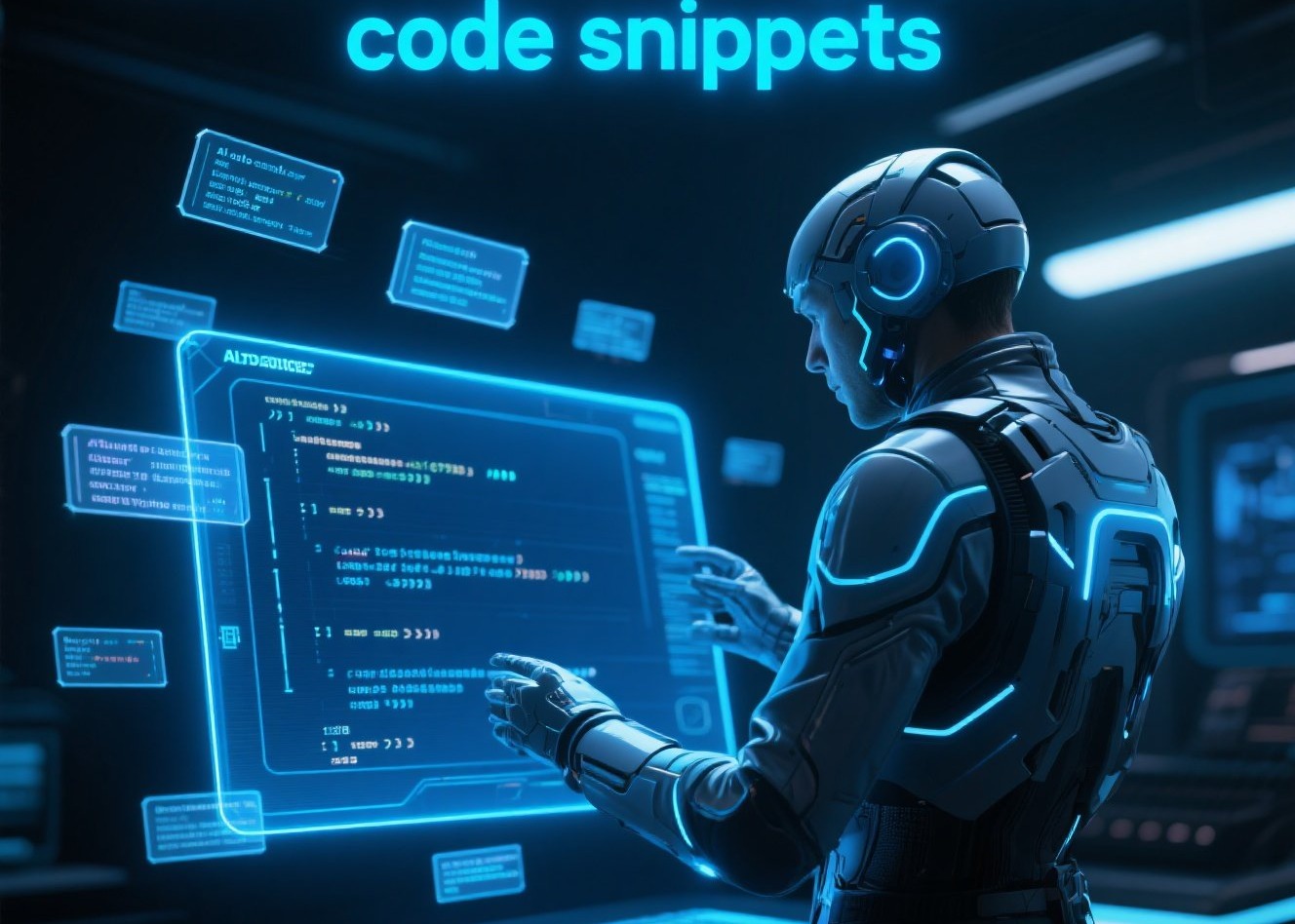
How to Use AI to Generate Code Snippets in 2025
Developers often spend hours searching for solutions on forums, documentation, or Stack Overflow just to find the right code snippet. But in 2025, AI coding assistants make it possible to generate accurate, ready-to-use snippets in seconds.
In this guide, we’ll show you how to use AI to generate code snippets, the best tools available, and how they fit into a modern development workflow.
Step 1: Choose the Right AI Coding Tool
Several AI tools specialize in generating high-quality code snippets:
GitHub Copilot X – Suggests code in real-time as you type.
Tabnine – Lightweight AI autocomplete tool.
ChatGPT (with Code Interpreter/Plugins) – Generates and explains snippets.
DeepSeek Coder – Free AI trained specifically for programming.
Cursor AI IDE – AI-native development environment with snippet generation.
👉 Each tool has strengths: Copilot for autocomplete, ChatGPT for multi-step coding help, and Cursor for AI-powered debugging.
Step 2: Provide a Clear Prompt
AI works best when you give specific instructions. For example:
❌ Weak prompt: “Write a login code.”
✅ Strong prompt: “Generate a Python Flask code snippet for a user login system with JWT authentication.”
Tips for effective prompts:
Mention the programming language.
Specify frameworks or libraries.
Include the desired output format (function, class, snippet).
Step 3: Review and Test the Snippet
AI-generated code is fast, but it’s not always perfect. Always:
Copy the snippet into your IDE.
Test locally to ensure it runs correctly.
Check for security flaws (especially in authentication or database queries).
Refactor if needed for performance and readability.
Step 4: Use AI for Explanations
One of the biggest advantages of AI is that it doesn’t just generate snippets—it also explains the logic.
Example prompt:
“Explain this React code snippet and how it handles state management.”
This makes AI a valuable learning tool for beginner developers.
Step 5: Integrate AI Snippets into Your Workflow
You can use AI to speed up many coding tasks:
Front-end snippets → React components, CSS utilities.
Back-end snippets → API routes, database queries.
Automation scripts → Python scripts for data cleaning.
Testing snippets → Unit test templates.
By integrating AI into your daily workflow, you’ll save time on boilerplate code and focus more on problem-solving.
Best Practices for Using AI to Generate Code Snippets
✔ Be specific with your prompts.
✔ Always test and debug AI-generated code.
✔ Use AI for repetitive tasks, not for full projects.
✔ Combine AI with your own coding knowledge.
✔ Stay updated—AI models are improving rapidly.
Conclusion
AI is transforming the way developers write code. Instead of wasting hours searching for solutions, you can now generate snippets instantly using tools like GitHub Copilot, ChatGPT, and Tabnine.
By learning how to prompt AI effectively, review code carefully, and integrate snippets into your workflow, you can boost productivity and become a more efficient developer in 2025.
FAQs
Q1: Can AI generate code snippets for any language?
Yes, tools like GitHub Copilot and ChatGPT support multiple languages including Python, JavaScript, Java, C#, and PHP.
Q2: Are AI-generated snippets reliable?
Mostly, yes—but you should always test and review them before using in production.
Q3: Can beginners use AI to learn coding?
Absolutely. AI tools not only generate snippets but also explain code, making them excellent for learning.
Q4: Do AI tools replace developers?
No—AI speeds up repetitive coding, but developers are still needed for logic, creativity, and problem-solving.
